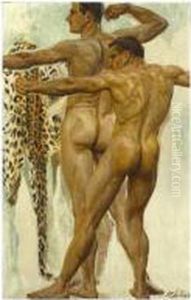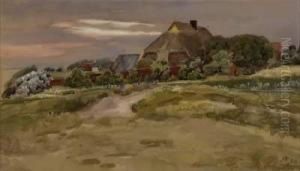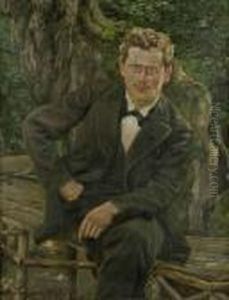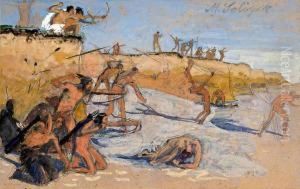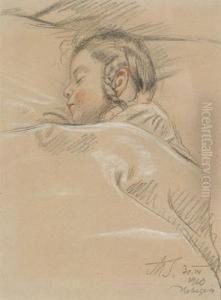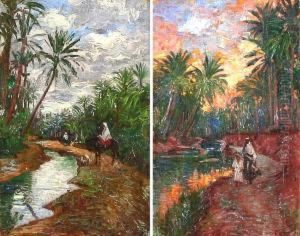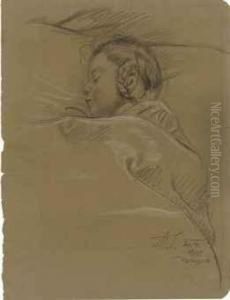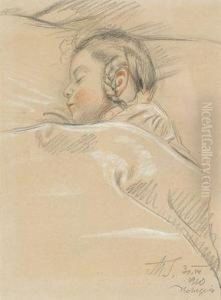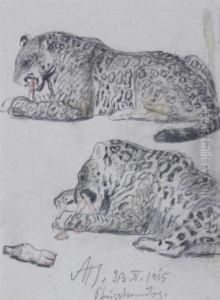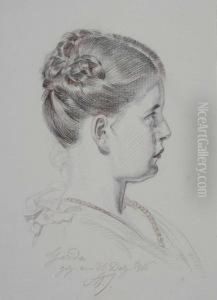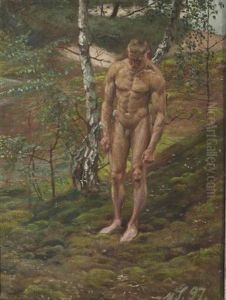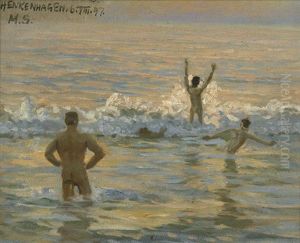Max Seliger Paintings
Max Seliger was a German painter and artist, born on August 8, 1865, in Breslau, which was then part of Prussia and is now Wrocław, Poland. He was known for his work in decorative arts and mural painting. Seliger's artistic journey began at a young age, and he received his formal education at the Royal Art and Trade School in Breslau.
After completing his studies, Seliger moved to Munich, which at the time was a vibrant artistic hub in Germany. There, he was exposed to various art movements and began developing his style. He was influenced by the Symbolist movement and the Jugendstil, the German version of Art Nouveau, which emphasized linear contours and flowing natural forms.
Seliger's work often focused on allegorical and mythological themes, which he executed with a sense of romanticism and mysticism. He was particularly skilled in large-scale mural paintings, which adorned numerous public buildings and churches across Germany. His murals often contained a blend of classical motifs and contemporary stylization, and they were celebrated for their color and composition.
In addition to murals, Seliger also engaged in other forms of decorative arts, including designing stained glass windows and mosaics. He was a member of several art societies and participated in many exhibitions throughout his career.
Max Seliger's contribution to German art was cut short by his premature death on September 14, 1920. Despite his early passing, his work left a lasting impact on the field of decorative mural painting in Germany and contributed to the evolution of the Jugendstil movement in the late 19th and early 20th centuries.
